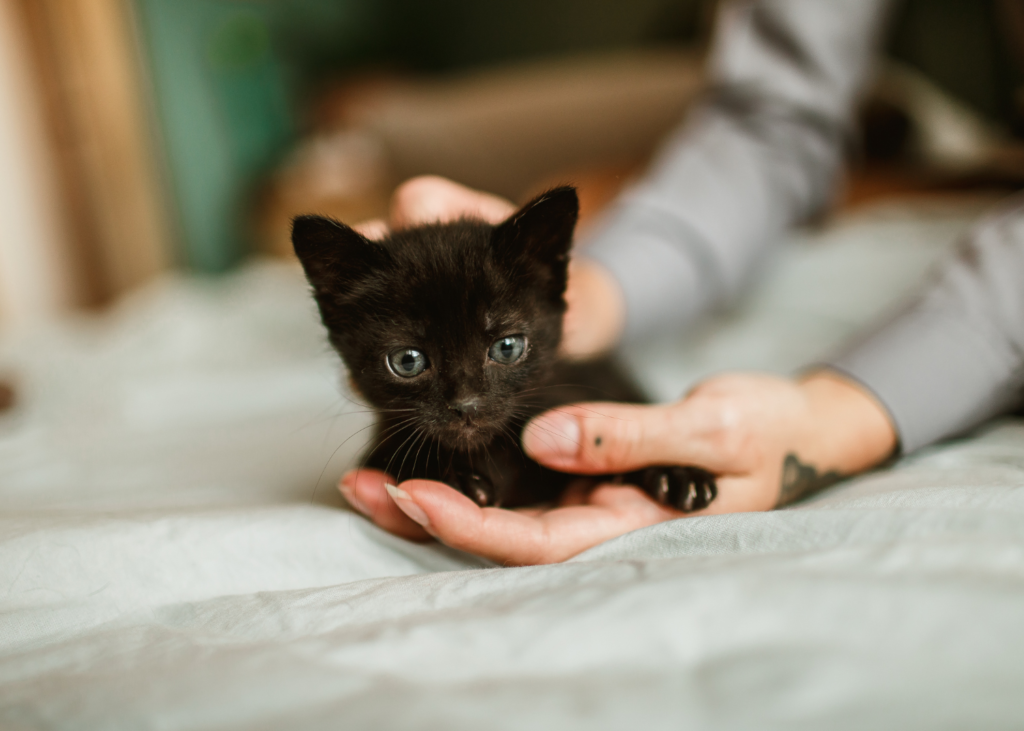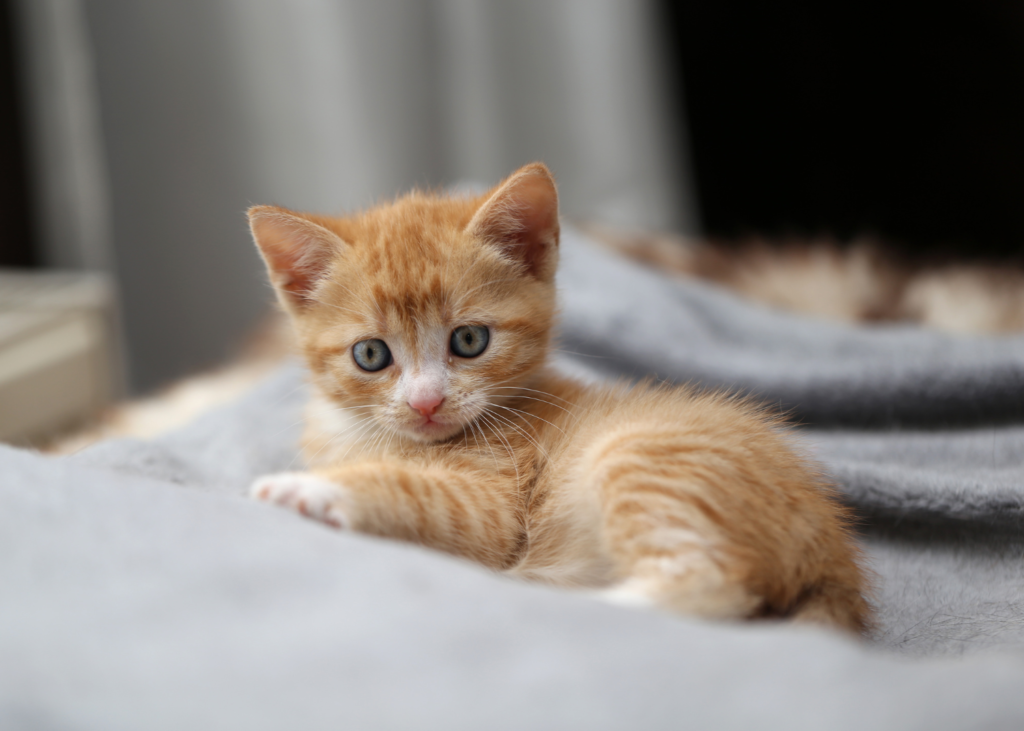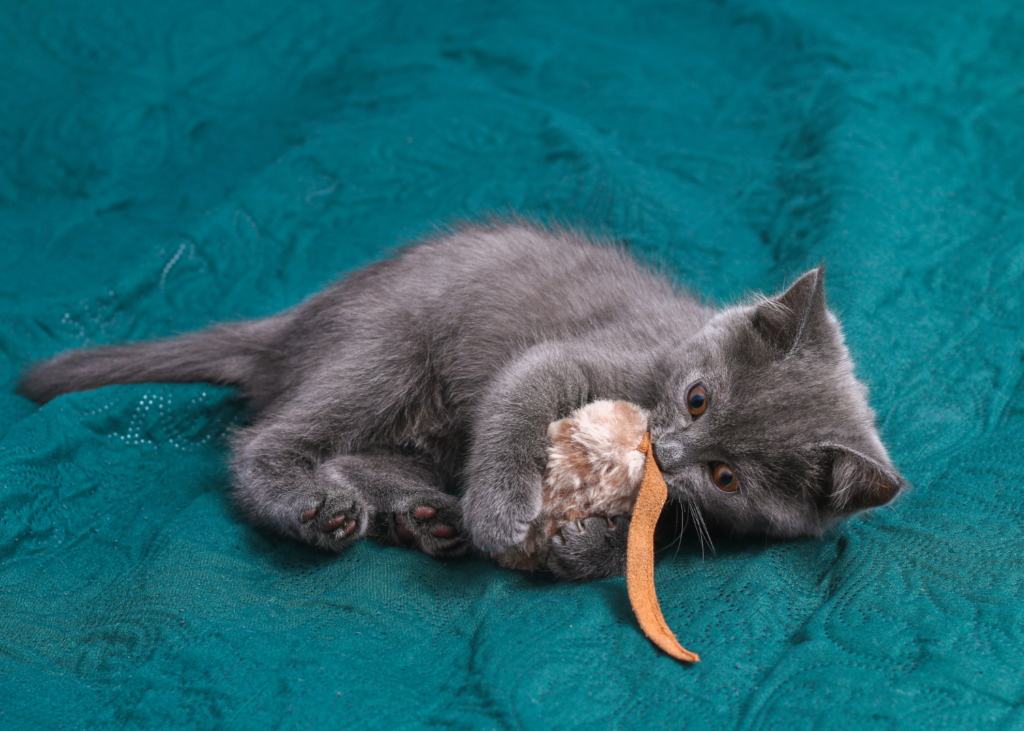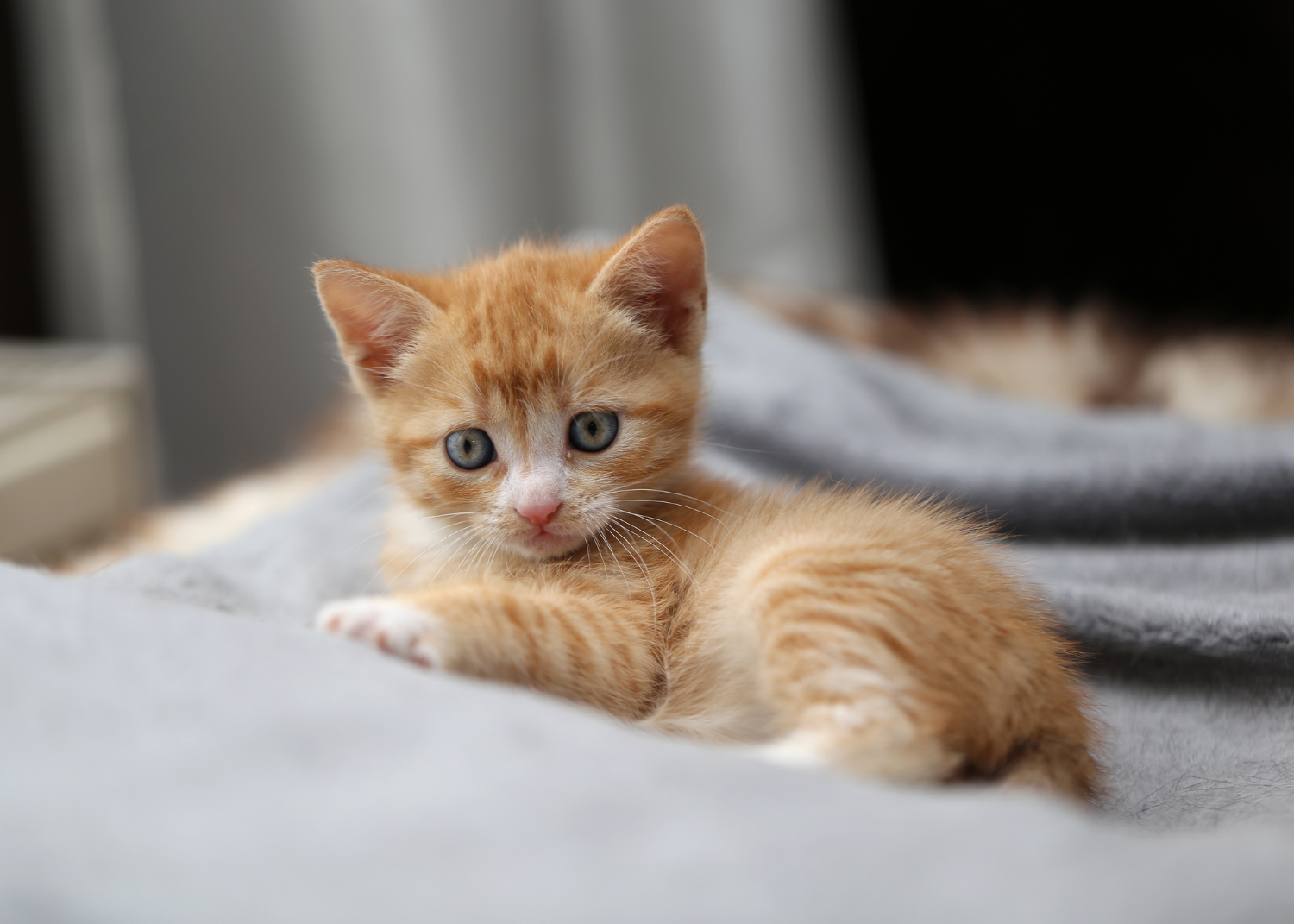Is Training a Kitten Possible?
Congratulations on your new kitten! You’ve brought them home and are now wondering, “Is training a kitten possible? At what age can I start training a kitten?”
Good news – there’s no need to wait! You can begin your kitten training now, no matter their age. The earlier you start training, the more well-behaved and well-adjusted your kitten will be.
Keep reading for all the details, from why to what to how.
Disclosure: Cat School may receive commissions from affiliate links included in this article.
The Benefits of Training a Kitten
When people bring a new puppy home, one of the first things they usually look into is puppy training and obedience. Unfortunately, it isn’t quite as common for people to consider kitten training when they bring a new kitten home. Many people don’t even realize that cats and kittens can be trained.
For most of the same reasons you’d train your new puppy, you should train your new kitten. There are many benefits, after all. Training will:
- Help them acclimate to their new home.
- Help you and your kitten start bonding and getting to know each other.
- Provide your kitten with an activity that will exercise both their mind and body.
- Set them up for success later on for things such as riding in the car, visiting the vet, meeting and interacting with strangers, etc.

What Should I Teach My Kitten?
One of the best ways to figure out what to teach your kitten first is to consider your future goals. For example, if one of your goals is to be able to travel with your cat, you will want to start introducing those skills as soon as possible.
Most cat owners would love it if their cats were:
- Comfortable going in their carrier and the car for vet trips and other stress-free travel
- Cooperative for nail trims, teeth brushing, and other handling requirements
- Not scared of strangers coming over
- Happy to wear equipment like a harness and leash
- Able to see dogs and people without panicking (if doing leash walks)
Maybe you have other goals, like wanting to be able to take your cat in a backpack or making sure your cat is dog-friendly if you plan to get a puppy down the road. It’s good to consider your plans and start training for future goals.
Whatever your goals may be, we recommend clicker training, as it is an excellent way to teach your kitten practical skills and help your kitten get started on the right paw. If you aren’t already familiar with clicker training, it is a form of positive reinforcement training in which you mark your pet’s desirable behavior and then reward it. This method gets its name because it uses a small, hand-held tool called a “clicker” which makes a clicking noise.
When your cat performs the desired or good behavior, you press the button on the clicker, and follow up the click with a food reward, such as a tasty treat or piece of kibble. Your kitten will quickly learn a reward is coming because of the action you did when they heard the click.
Now that you have an idea of how clicker training works, you can begin to use it to train some foundational behaviors that will set your kitten up for success.
1. Socialization
If you’ve brought a kitten home that’s already happy to cuddle with you, that’s great! However, it’s not uncommon for people to get a kitten that needs time to warm up to them. If your kitten is hiding under the bed and will only eat when you aren’t in the room, the first step is to fix that through kitten socialization.
Kitten socialization is the process of introducing your kitten to other living beings, exposing them to different environments, getting them comfortable being handled, and generally helping them to make positive associations with the world around them. It is a crucial part of kittenhood if you want a well-socialized kitten who will be more accepting of handling, of new people and environments, and of things like car rides, vet visits, carriers, nail trims, grooming, etc.
One way to improve your cat’s socialization skills around people is by using the target stick. Once you train your kitten to touch their nose to the target, you can use it to lead them around, jump on and off objects, lead them into a carrier or playpen, etc. The target stick is analogous to icebreaker games. It’s much easier to interact with unfamiliar company if there’s a game to get you started. The target stick will help your kitten interact effectively with new and unfamiliar people, and see them as a source of treats and rewards.
Further reading: How To Socialize A Kitten
2. Handling
Young kittens are irresistible, so you’re obviously going to want to hold and snuggle with your new kitty as much as possible. Understand though that some kittens might be a bit fearful at first and not totally open to being handled. If that’s the case, don’t worry! You can work with your kitten so they get used to your touch and allow you to handle them (see section above on socialization).
Getting your cat used to being handled is important for more than just snuggles though. It is necessary for tasks such as nail trims, teeth brushing, grooming, and vet visits. Petting, holding, and handling your kitten should be a part of your everyday kitten training routine.
Touch your kitten’s paws, pet their head, touch their ears, tail and mouth. Get them used to having your hands on them. You can make these experiences positive ones by including treats. You want your kitten to associate your touch with good things.
If your kitten won’t get anywhere near you, you can start by building their confidence at a distance, click and reward them for eye contact or any movement. For example, put a soft blanket far away from you with some tasty food. If your kitten moves there, click and toss another reward on the blanket. The goal is to show your kitten that looking at you and moving around you is a positive experience.
3. Litter Box Training
Litter training a kitten is obviously one of the first skills you want to start with when you bring your kitten home. To set your kitten up for success, it’s important to create a conducive environment for them. This includes:
- Choose a litter that is kitten-safe. Because kittens explore with their mouths, you don’t want to use a litter that contains fragrances, harsh chemicals, or clumping properties. Once your cat is a few months old and well-acclimated to using the litter box, you can switch to a clumping litter. For now, opt for a pellet-based litter that won’t be harmful if ingested.
- Choose the proper litter box location. Use a litter box that has an open top and is shallow for easy access, and look for a corner spot that is away from clutter. Kittens ages 3-8 weeks old should be confined to one room while they’re litter training so they don’t have to travel far to find the litter box. Older kittens acclimating to larger spaces should have multiple options to choose from. They should always have one within 10 feet.
- Use positive reinforcement. When your kitten uses the litter box correctly, be sure to praise them! If they go to the bathroom outside the box, don’t punish them though. Instead, clean and disinfect the area. If they continue to use the same spot consistently, try moving their box to that location.
- Keep the litter box clean. Scoop the box at least once a day to keep it fresh. No one likes to use a dirty bathroom!
4. Sit
Training a kitten to sit is one of the first “tricks” you can teach them. To do this, you need to capture your kitten’s “sit” by clicking and rewarding whenever they do it naturally. Pair it with a hand signal and voice cue, and eventually your kitten will learn to do it on command.
Watch this video for a training tutorial:
5. Parking Spot Training
One of the most useful behaviors you can train is to go to a mat, or “parking spot,” on cue. I recommend beginning to train this skill from an early age. Your kitten’s “spot” can be a mat, blanket, or cat bed. You want something that is easily portable and can be moved around different areas of your home. I personally just use my laptop case.
Watch this video for a training tutorial:
Further reading: “Parking Spot” Training: Train Your Cat to Go to a Mat
6. Proper Meal Time Behavior
Chances are your kitten will run around crying and acting a bit crazy at meal times. This type of behavior is not one you want to encourage, as it is not a good way to set the tone for future behaviors. For this reason, teaching your kitten self-control around mealtimes is a good idea.
You can do this by using the previously mentioned “sit” and “parking spot” training skills. Whenever it’s time to feed your kitten, ask them to sit in their designated spot – for example, on a chair or stool. It will take some practice for sure, but once they get the hang of it, feeding times will be more controlled and peaceful.
During the training process we can prevent kittens from practicing naughty behaviors by using a playpen.
7. Training Their Name
It’s a common joke that cats never come when they’re called. While this may be true for untrained cats, you can certainly train your cat or kitten to come to their name. All it takes is some practice and lots of treats.
Watch this video for a training tutorial:
8. Carrier Training
Your kitten will need to go for a car ride eventually, whether it’s to visit the vet or to go someplace more fun. To make their car and travel experiences as positive as possible, you should begin carrier training ASAP. The carrier training process involves a quality car carrier, lots of treats, and patience.
If you need help with your carrier training, we include step-by-step training tutorials in the Cat School course.
Watch this video for a backpack training tutorial:
Further reading: How to Get a Cat in a Carrier and Travel in the Car
9. Harness Training
Taking cats out on a harness and leash is becoming more and more popular. It is a great way to safely let your cat explore the outdoors, which is an easy and excellent way to provide enrichment to your cat’s life. While you certainly can train an adult cat to accept a harness and leash, the training process will likely go more smoothly if you start at a young age.
Even if you don’t want to explore outdoors with your cat on a harness and leash, we still recommend going through the training process. Having your cat harness trained can come in handy for many reasons, such as in emergency situations, visiting the vet, etc.
Watch this video for a harness training tutorial:
Other Tips for Training a Kitten
Now that you know which skills you should work on, along with some how-tos and resource recommendations, here are some final tips to make your training sessions as successful as possible:
Keep your training sessions short.
A kitten’s attention span won’t last too long, so it’s important to keep things short, simple, and easy to begin with. You can do multiple training sessions in a day, but keep each individual one down to about 5 minutes or less.

Work on one skill at a time.
Again, a kitten’s attention span won’t last too long. Plus, you don’t want to overload your kitten, as that will make your training less productive and stressful. Keep your training sessions down to just one skill at a time in order to see the most progress.
Avoid punishment.
We are proponents of positive reinforcement. Rather than punishing your cat for bad behavior, you should reward them for good behavior. Punishment can lead to stress, cause your kitten to be scared of you, and ultimately hurt your relationship that you’re working so hard to build.
Pick a quiet area for training.
Kittens can be easily distracted. In order to keep your cat focused when training, pick a quiet room or area of your home that is free of distractions. No background TV or music, no other pets or kids. Just you, your kitten, your clicker, and their treats.
Choose a healthy food and consistent meal schedule.
When it comes to training your kitten, you will need to find a reward they are willing to work for. Food rewards typically work best, but in order for your kitten to be enticed by a food reward, you have to make sure you are feeding them healthy regular meals and that they don’t have 24-hour access to a bowl of dry food.
Generally speaking, your kitten’s treat preferences will depend on what you feed them for meals. If you are feeding them a processed food diet, it will be tough to find a reward that can compete — that’s like feeding a child french fries and then offering a granola bar for dessert.
To build a kitten’s food motivation, you want to make sure they don’t constantly have food readily available and switch to feeding small, scheduled meals – at least three small meals per day. You also want to feed them a healthy, moisture-rich diet and expose them to a variety of foods to prevent them from becoming picky.
Once your kitten is eating properly, you’ll be able to use healthy cat treats such as freeze-dried treats, lickable treats, or even their wet food on a spoon.
Further reading: What are the Best Treats for Clicker Training Cats?
Be consistent.
Your first step is to show your kitten that learning is fun. Creating a routine and establishing consistency with their training will help your kitten make progress.

Congratulations again on your new family addition! We wish you all the best with your training. If you reach a point where you need help or have questions about your kitten’s progress, be sure to join the Cat School Membership community, where students are encouraged to share about their training and ask questions to receive personalized feedback and help. In Cat School, you’ll have a roadmap of skills to follow, with each training step broken down into bite-sized pieces. We’d love to have you as a student!

